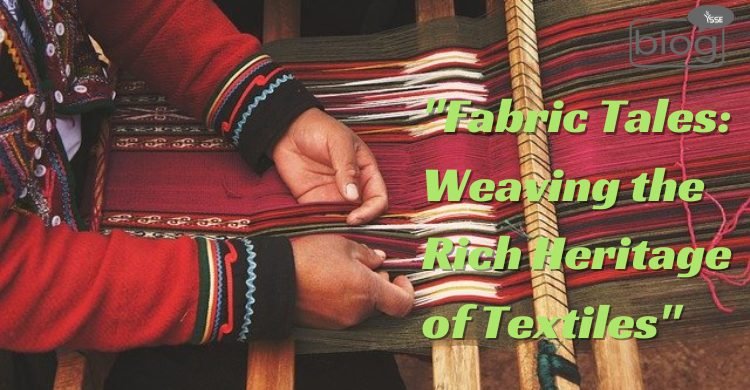Bangladesh boasts a vibrant tapestry of textiles, including khadi, taant, silk, and more, deeply embedded in its cultural roots.
As modernization threatens these traditions, urgent efforts are needed to preserve not just fabrics but the skills that breathe life into them.
This isn’t just about heritage; it’s about economic growth and the livelihoods of skilled artisans. The handloom industry was known for its grandeur and quality.
Royal patronage flourished, weaving textiles into the fabric of significant events like weddings and festivals.
This elevated textiles beyond mere utility, transforming them into prestige and status symbols.
Fast fashion poses a significant threat to Bangladesh’s textile heritage. We need to dive into the potential solutions: preservation, innovation, and a comprehensive master plan to secure the future of this rich sector.
But to understand the urgency, let’s rewind to the Vedic period, where the Rigveda introduces us to the vasovaya, vaya, and vayitri – male and female weavers deeply entwined in crafting fabrics integral to rituals, traditions, and societal customs.
Khadi : Reviving a Timeless Craft
Khadi, with its roots reaching back to 5,000 BC, is a testament to craftsmanship.
Unfortunately, in Bangladesh, khadi’s potential has been overlooked by designers and retailers.
Yet, its preservation is crucial, not just for its exquisite cotton weaves but for sustaining traditional skills, generating employment, and supporting rural economies. The handloom sector, including khadi, provides livelihoods for approximately 1.5 million artisans, significantly contributing to the country’s rural economy.
Taant of Tangail : Weaving Cultural Continuity.
Taant, with centuries-old cultural significance, employs over 2.5 million weavers in Bangladesh.
Tangail’s taant sarees, famous for their unique patterns, are a visual spectacle. The community of weavers, once dominated by Hindus, evolved after the Liberation War, with local Muslims now leading the craft.
Monira Emdad, the founder of Tangail Saree Kutir, played a pivotal role in introducing longer six-gauge sharis, enhancing their appeal and versatility in Bangladesh’s climate.
Silk : A Cultural Symphony.
Bangladeshi silk isn’t just a fabric; it’s a cultural narrative. Thriving on the abundance of mulberry trees, the silk industry benefits from a conducive climate for sericulture.
Skilled artisans transform silk threads into intricate patterns, telling stories of creativity and dedication.
Whether it’s the traditional Jamdani silk or the patterns of Rajshahi silk, Bangladeshi silk embodies diverse and intricate art forms cherished for centuries.
Monipuri Taant : Weaving Tradition in Northeast India.
Monipuri fabric from Manipur, also known as Moirangphee or Phanek, has deep cultural roots.
The Monipuri community in Sylhet preserves traditional handloom skills, creating clothes like Innaphi and Phanek.
Khaidem Sithi, the founder of Engellei, highlights the community’s self-sufficiency and the evolution of handloom skills.
Banarasi : Luxurious Threads of Heritage.
Banarasi saris, originating in Varanasi, India, trace back to the Mughal era. Skilled artisans, passing down weaving techniques, create saris with intricate designs using pure silk threads and zari.
Associated with royalty, Banarasi saris symbolize prestige and elegance, making them a lifelong investment for many.
Jamdani : A Tapestry of Tradition and Innovation.
Jamdani, originating 2,000 years ago, intertwines threads of tradition and innovation.
Evolving from muslin weaves; it showcases intricate motifs and vibrant patterns. Despite historical challenges, Jamdani endures, adapting to new techniques and materials while preserving its essence.
Embroidery : Stitching Stories with Color.
Bangladesh’s embroidery takes various forms, adorning clothing, blankets, and arrases.
Clusters of fair trade embroidery, like the one in Uttara, master techniques like mirror work, bubble stitching, dal chain stitching, and bhorat fill-up stitching, telling figurative stories through elaborate designs.
Nakshi Kantha : Stitching Folk Tales.
Nakshi Kantha, handmade running stitch quilts, weave folk stories through colorful, patterned designs. Traditionally made from layers of old sarees, lungis, or dhotis, they are a testament to resourcefulness and creativity.
In unraveling these textile tales, we discover more than just fabrics; we uncover a cultural legacy intricately woven into the fabric of Bangladesh’s history.
Preserving these threads isn’t just about sustaining traditions; it’s about ensuring that each thread continues to tell stories for generations to come.
To read more blogs like this, click here.
Writer
Tasrin Jerin Mim
Intern, Content Writing Department
YSSE

